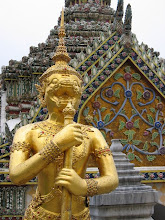By Shibani Mahtani

- Agence France-Presse/Getty Images
- A boy plays with water at Singapore’s Lower Seletar Reservoir.
The Eco2 Index, crafted by researchers at the University of British Columbia, looks at both the economic and ecological security of a country and how fast countries are using up resources at their disposal – an initiative they say was promoted by the threat of climate change, a growing world population and mounting financial problems.
“We hear that countries are suffering financially every day in the news, but that only tells half the story,” said Rashid Sumaila, director of the university’s Fisheries Centre, in a statement. “Piling up ecological deficits is just as concerning as piling up financial deficits.”
Singapore was joined by other high-income countries at the bottom of the list, with many sharing similar land and resource scarcity problems. The five “unhealthiest” countries according to the index besides Singapore were Jordan, South Korea, Israel and Kuwait. The researchers hope that this list will be able to better prepare these countries in planning their consumption and future resource needs.
Coming out top on the list were Bolivia, Angola, Namibia, Paraguay and Argentina, even though they may have relatively weaker economies. Researchers say are better prepared to offer future generations the financial, food, water and energy security they require.
The Southeast Asian country coming out on top in the index was Myanmar, ranked 32 out of the 150 countries. Resource-rich Indonesia was ranked at 42, despite having significant pollution problems, with Malaysia and Thailand at No. 80 and 96 respectively.
Researchers from the University of British Columbia partnered with a non-governmental organization focused on ecological sustainability, known as the Global Footprint Network, in compiling the list, using figures and data from the World Bank.
Though Singapore has a huge trade and budget surplus, Mr. Sumaila said that the country’s “ecological deficits” are the worst in the world. This means that Singapore’s consumption – which includes its giant, air-conditioned shopping malls – and the waste produced by its citizens heavily outweigh locally-available resources such as agricultural land and energy.
Singapore imports much of its energy, and is mostly reliant on natural gas. It also must import most of its food, and despite talk by government leaders of expanding local agricultural production, property developers have carved up all but a few tiny slivers of farm land, mostly located near the border with Malaysia. Other crucial resources like water are scarce, and since land is at a premium, water catchment areas have to be built without taking up space that’s needed for condominiums and other living spaces.
Multiple treaties concerning water have been signed, and two of these still hold, assuring Malaysia will provide Singapore with water until 2061. Driven to achieve self-sufficiency when possible for at least some of its crucial resources, Singapore’s Public Utilities Board treats and reclaims wastewater (known under its brand name NEWater) – a process that is expected to supply 80% of the country’s water needs by 2060.
Indeed, many residents may scratch their heads when contemplating Singapore’s lowly ranking. Despite environmentalists’ concerns that consumption patterns there are unsustainable, many expatriate families have moved to Singapore in large part to escape the unhealthy conditions –including unclean air – in other Asian cities such as Jakarta and Hong Kong; if anything, some residents feel Singapore is too sanitized. It has also has earned kudos globally for its innovative responses to its water needs.
http://blogs.wsj.com/searealtime/2012/02/22/singapore-the-worlds-unhealthiest-country/



















0 comments:
Post a Comment